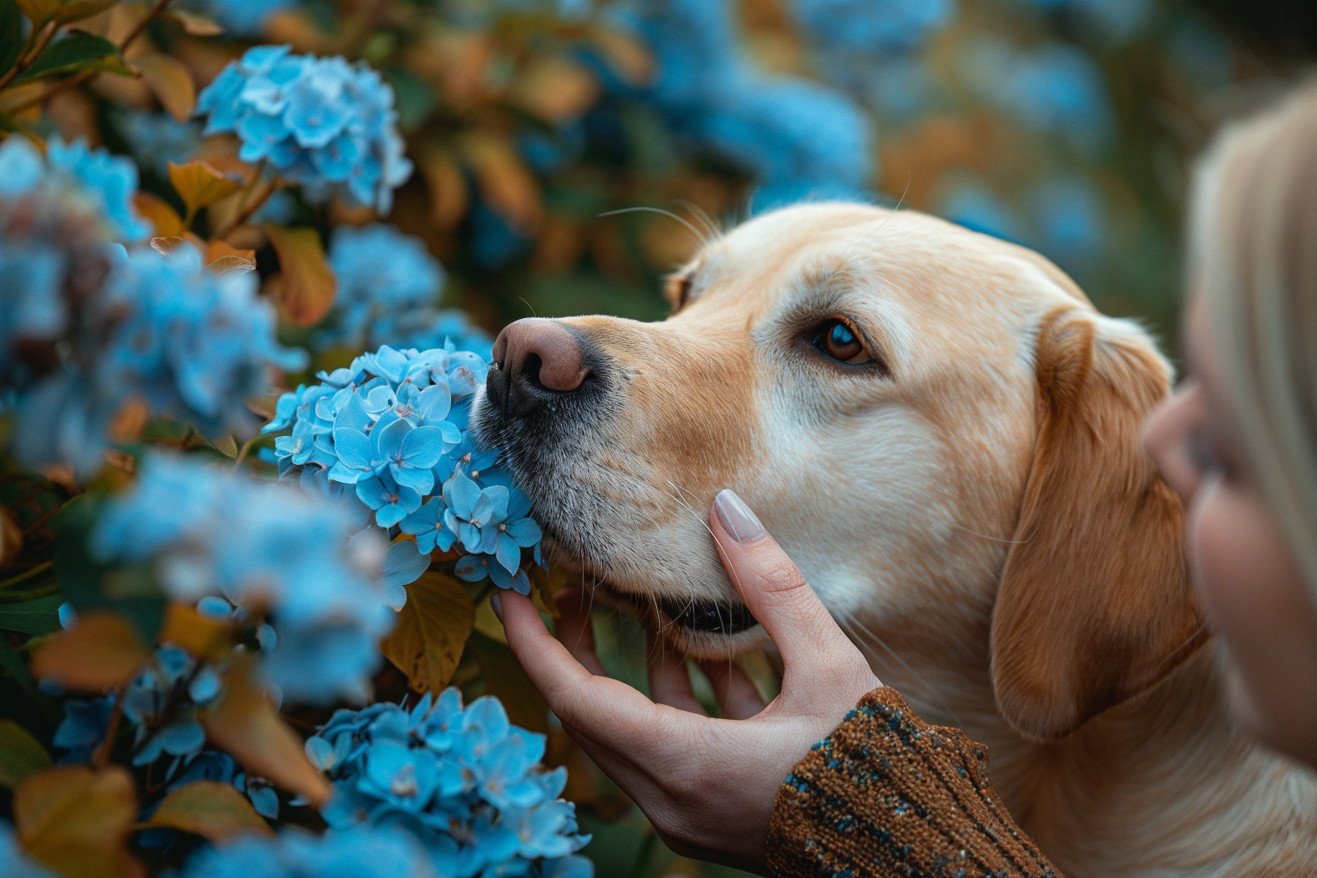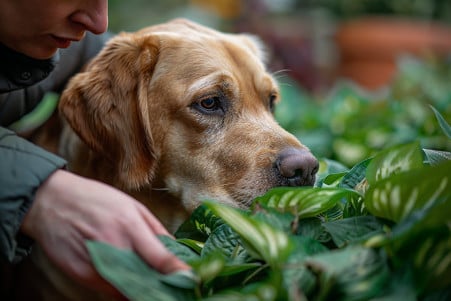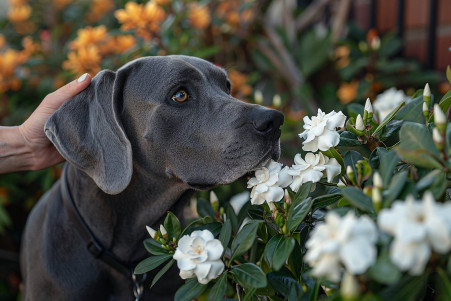Can Dogs Eat Hydrangeas? How to Protect Your Pets
25 March 2024 • Updated 25 March 2024

Hydrangeas are beautiful plants that can add a pop of color to any garden, but if you're a pet owner, you may be wondering if they're safe to have around your furry friends. Unfortunately, hydrangeas are poisonous to dogs.
Every part of the plant, from the leaves to the flowers to the bulbs, contains cyanogenic glycosides and low levels of amygdalin, all of which can be toxic. If a dog consumes hydrangea, they may experience vomiting, diarrhea, lethargy, and in more severe cases, respiratory and cardiac effects.
To help you better understand the dangers of hydrangeas and how to protect your pets from them, we'll look at the results of veterinary toxicology research and pet poison helpline data. This will help us understand what the common symptoms of hydrangea poisoning in dogs are, how serious they tend to be, and what kind of treatment is typically needed.
Armed with this knowledge, dog owners can make sure their gardens are safe for their pets and that they can all enjoy a happy, healthy relationship with the plants in their lives.
Are hydrangeas poisonous to dogs?
Symptoms and Signs of Hydrangea Poisoning in Dogs
Despite their lovely appearance, hydrangeas are highly toxic to dogs. Even small amounts of hydrangea leaves, flowers or buds can lead to poisoning in dogs due to the presence of cyanogenic glycosides like amygdalin, according to FOTP. In mild cases, dogs may experience vomiting, diarrhea, lethargy and confusion, while more severe cases can lead to changes in heart rate, difficulty breathing, muscle tremors and blue-tinged gums, which is a sign of cyanide poisoning.
The Pet Poison Helpline explains that the severity of the poisoning depends on the amount and the parts of the hydrangea that are ingested. The leaves and flowers are more toxic because they contain higher levels of amygdalin. According to WagWalking, symptoms can develop quickly, even within 15-30 minutes of ingestion in severe cases.
Dog owners should be on the lookout for any symptoms and seek medical attention if any of the symptoms listed above occur after a dog has been exposed to hydrangea. If left untreated, poisoning can lead to life-threatening complications, including brain damage, so it's important to get help as soon as possible. Knowing what to look for can help dog owners act quickly to minimize the impact of the poisoning and increase the chances of a full recovery.
First Aid and Emergency Treatment for Hydrangea Poisoning
If a dog has eaten hydrangeas, the first thing to do is call a veterinarian or pet poison control hotline. According to HowStuffWorks, the vet may suggest using hydrogen peroxide to induce vomiting or activated charcoal to absorb the poison. The dog may also need supportive care, including IV fluids, anti-nausea drugs, and pain relief, to help it heal, per the JustAnswer veterinary expert.
Dog owners should make sure to do exactly what the vet says and keep a close eye on their pet as it recovers. Since WagWalking says that hydrangea poisoning can be fatal if it's not treated, especially if it's caused by cyanide toxicity, it's important to make sure that the dog gets medical care as soon as possible. This will give the dog the best chance of making a full recovery.
Different Levels of Toxicity: What Parts of the Hydrangea Plant Are Most Toxic?
The bigleaf hydrangea plant contains cyanogenic glycosides, which are the most toxic components for dogs, says ACEP Now. The leaves, buds, flowers, and bark of hydrangeas are all toxic and can cause poisoning if ingested, according to Plant Addicts.
However, the flowers and leaves are the most toxic parts of the plant, since they are the parts that dogs are most likely to eat out of curiosity, according to the Queensland Poisons Information Centre. Even small amounts of hydrangea can be toxic to dogs, especially if they eat the most toxic parts of the plant. Meanwhile, dried hydrangeas are just as toxic as fresh hydrangeas, so both types should be treated with care, says Plant Addicts.
While the hydrangea plant is dangerous for dogs, there are many safe, pet-friendly options that can be used to create a beautiful, safe outdoor environment.
Dog-Safe Alternatives to Hydrangeas
Instead of hydrangeas, many other plants are safe for dogs and can be used in home gardens and landscaping. According to Daily Paws, some dog-friendly options for flowers and perennials include marigolds, zinnias, hibiscus, and African violets. Southern Living also lists petunias and gerbera daisies as pet-friendly flowering plants.
For shrubs, BetterPet recommends camellias, magnolias, and osmanthus as colorful, non-toxic options. Meanwhile, the same source says that indoor plants like Boston ferns, succulents, and herbs are generally safe for pets. However, it's important to check the toxicity of any plant you're considering, and make sure it's non-toxic to dogs, as recommended by Monrovia.
By choosing these dog-safe alternatives, dog parents can have a beautiful, dog-friendly outdoor space that won't put their pups at risk of hydrangea poisoning.
How to Avoid Hydrangea Poisoning: Dog-Safe Landscaping Tips
The most effective way to avoid hydrangea poisoning in dogs is to get rid of any hydrangea plants in areas where pets can reach them, according to the Pet Poison Helpline. It’s also important to make sure you research and avoid planting any toxic plants, including hydrangeas, when you’re landscaping or gardening, according to the ASPCA.
In addition, dog owners can create a dog-friendly space in their yard that only includes non-toxic plants and materials, according to Monrovia. It’s also important to supervise dogs when they’re outside and make sure they don’t eat or chew on any plants, according to The Wildest.
In addition, it can be helpful to make sure that everyone in the household and any visitors understand the dangers of hydrangeas and the importance of keeping dogs away from them, according to the same source. These measures can help dog owners make sure their pets are safe and happy in their outdoor environment.
Conclusion: Protecting Dogs From Hydrangea Toxicity
While hydrangeas are lovely to look at, their toxicity can be a danger to dogs who like to explore and play in the yard. Knowing the symptoms, severity, and treatment of hydrangea poisoning can help dog owners respond appropriately and quickly. Symptoms can be as mild as an upset stomach or as severe as cyanide poisoning, and the severity will depend on how much and which part of the plant the dog has ingested.
The best way to protect dogs from hydrangea poisoning is to prevent exposure by creating a dog-safe yard and choosing non-toxic plants. With the right information and precautions, dog owners can enjoy their gardens while keeping their pets safe, happy, and healthy. Staying informed and helping to spread the word about the dangers of hydrangeas can help ensure that dogs and plants can coexist peacefully.


